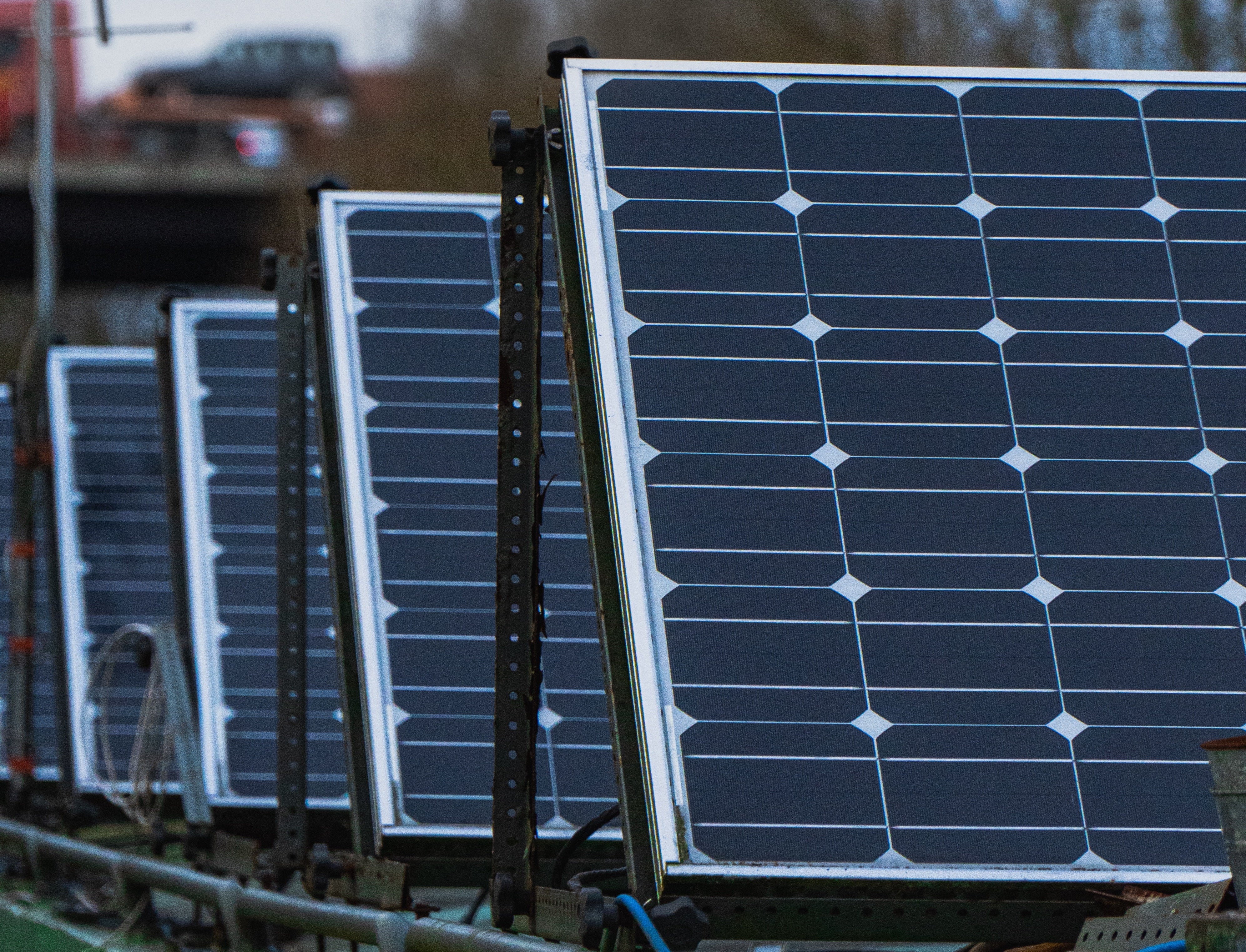Hey fellow world-savers and welcome back to one5c. Before we get into it this week, let me introduce the newest member of the one5c team: Associate Editor Sara Kiley Watson, one of the sharpest and most knowledgeable environmental reporters around. You’ll be hearing from her a lot about sustainable living and greenwashing, but she also knows plenty about energy—and this week she’s breaking down the hype around “clean hydrogen” to help parse if it’s really the game changer some folks would have you believe it is.
After all, this week’s roundup shows us how hype can spin out of control when reality outpaces promises (ahem, carbon credits), or when companies go too long without being forced to answer hard environmental questions. Don’t worry, there’s good news, too.
As always, if you’re enjoying one5c, please forward us to someone who wants to save the world. —Corinne
WHAT WE’RE INTO THIS WEEK

Those fillets could be back on the menu soon. Credit: CA Creative on Unsplash
Earth-friendly eats
The landlocked farms making salmon sustainable
Salmon is the No. 2 seafood in the U.S., right between shrimp and tuna, but those fresh fillets have a footprint—no matter where they come from. Farmed fish—most of what we eat—is largely flown in from places like Chile and Norway, and the boats that pull in the wild catch in Alaska can be big emitters. But a small group of salmon farms is working on a new model that brings aquaculture onto dry land and promises to clean up a lot of what’s wrong with the industry, reports The New York Times. Right now, their fish is only available in a few local markets, but, if successful, it could put the salmon back on the menu for planet-conscious eaters.
Accountability in action
Climate transparency is becoming the norm
Companies in the U.S. are rushing to comply with European Union regulations that require thorough transparency about the climate impacts of their businesses. The rules, dubbed the Corporate Sustainability Reporting Directive, will affect the largest firms operating in the E.U. in 2024, but will expand to include those running even small European subsidiaries—totaling around 3,000 businesses. Among other things, they’ll have to report on their total greenhouse gas emissions, which includes what’s produced throughout the entire supply chain and by end users. Absent any federal regulations here in the U.S., companies are also feeling the squeeze from a California law that’ll apply to anyone who wants to do business in the Golden State.
Cause for optimism
Battery recycling that saves 98% of lithium
There are pinch points involved in scaling any of the technologies of electrification. For solar panels, the conversation often centers on silicon; for wind turbines it’s rare-earth minerals; and for EV batteries? The focus is largely on lithium. Keeping our available supply in circulation is a key part of the transition off of internal combustion, but current recycling methods can only gang onto around 70% of the element. Last week, though, a team of Swedish researchers showed off a new method that recovers 98% of the lithium (and 100% of aluminum) from spent cells. Their secret sauce: reversing the typical order of operations for separating out those precious metals.
Good read
The carbon offset hustle
While it’s true that saving forests is key to addressing the effects of the climate crisis, whether or not the brokers that sell carbon credits can show receipts to prove their vouchers are actually doing any good is a question the firms themselves can’t truly answer. New Yorker writer Heidi Blake’s deep history of the carbon-credit business reveals a hustle based on shaky math and conflicting promises its creators are struggling to defend. “Are the Kariba credits based on reality?” a staffer asked the co-founder of broker South Pole in a 2022 meeting; “I give the question back: What is reality?” he snapped back.
Mic-drop climate stat

The amount of time per day the average person spends on the activities that pollute the most, according to a new study published in the journal Sustainability Science. That’s about the same as what we spend cleaning our homes and washing dishes, which, the authors say, makes shifting dirty work feel achievable.
THIS FOR REAL?
Should you believe the ‘clean hydrogen’ hype?
By Sara Kiley Watson
Hydrogen energy is having a moment. A little more than a week ago, the Biden administration announced that seven regional “hydrogen hubs” across 16 states would receive $7 billion for federally approved projects, and then promptly upped that number to $43 billion to fund hydrogen development in refineries, ports, fertilizer production, and other industrial uses.
Theoretically, this is pretty awesome. “Clean hydrogen produced with resources like wind and solar, that lets us get us to this place where we’re not putting more carbon in the atmosphere,” Biden said. But in boasting, he actually hit on hydrogen’s biggest hurdle: We need lots of clean energy to make clean hydrogen. Here’s what you need to know as the hydrogen hype gets laid on thick.

Truly ‘clean’ hydrogen relies on a steady electron supply from arrays like this. Credit: Caspar Rae on Unsplash
The hype
Hydrogen is easily the most abundant element in the universe, making up 73% of the mass literally everywhere. The element rarely appears on its own in nature, explains Alejandro Nuñez-Jimenez, a sustainable energy researcher at the Swiss Federal Institute of Technology in Zürich, but there are ways of getting it—and then utilizing it as a fuel for anything from electricity generation to rocket fuel.
There are a couple of reasons why hydrogen is in the spotlight. One is that fuel cells charged up with the stuff are a pretty awesome way of storing energy from renewables for use when the sun isn’t shining and the wind isn’t blowing. Stored hydrogen can also come in many forms: compressed gas, cryogenic liquid, or loosely bonded with metal. For the oil and gas industry, these end products come with the added bonus of utilizing the infrastructure they already have in place for moving around physical fuel, adds Nuñez-Jimenez, versus taking the giant leap into electrical transmission.
Not to mention, when spent, hydrogen fuel just emits water—a positive change for carbon-heavy industries like aviation and steel production.
The overview
There are myriad ways to procure the elusive H2 molecule from raw materials ranging from water to fossil fuels. The outputs from the various approaches are known as the “hydrogen rainbow.”
The most common method spits out gray hydrogen. This approach takes natural gas, aka methane (CH4), and splits hydrogen from carbon. However, this can lead to some nasty emissions—between 10 and 14 kilograms of CO2-equivalent emitted per kilogram of hydrogen produced, according to the International Energy Agency. That’s equivalent to driving almost 36 miles or burning nearly 16 pounds of coal to get just one measly kilo of H2.
Enter blue and green hydrogen, two of the no- or low-carbon emissions options grabbing headlines. Blue hydrogen is essentially gray hydrogen but with carbon-capturing technologies in place to trap those emissions (four of the seven newly funded projects rely on this method). Doing this, however, will continue to bake a reliance on fossil fuels like natural gas into our energy infrastructure, and recent research has shown that making blue hydrogen is a 20% more carbon-intensive process than burning coal or natural gas for heat—and 60% more intensive than burning diesel oil. “Hydrogen produced from fossil fuels is not a solution — whatever the color,” Jill Tauber, vice president of litigation for climate & energy at Earthjustice, said in a release earlier this month.
Green hydrogen is a different beast: It taps electricity from renewable sources like wind and solar to split up water molecules (that’s two hydrogens and an oxygen), thereby creating pure hydrogen with none of the climate-crisis-inducing byproducts. Gray, blue, and green are the big three colors on this rainbow, but if you’re curious about other hues, here’s a quick guide.
The catch
Green hydrogen sounds pretty awesome, but there are caveats.
With green hydrogen, the question is if we have enough renewable energy to spare in order to make the process worth it. Right now, renewables account for around 20% of all U.S. electricity. But if we start using that piece of the pie to make green hydrogen, we’re going to need something else to power our homes and cities, warns Hannes van der Watt, a professor at the University of North Dakota specializing in energy. If we’re going to be making more hydrogen with renewables, it’s critical that we simultaneously add renewable energy to the grid. Otherwise, we’re just creating a gap that might get filled up with carbon-heavy alternatives.
Ideally, when it comes to green hydrogen, there needs to be a policy balance that holds producers accountable for expanding and using renewable energy without completely stifling development, van der Watt adds. The E.U. already has a plan up and running that rolls out these types of requirements over several years. Now we’re just waiting to see how the balance plays out in the U.S.
